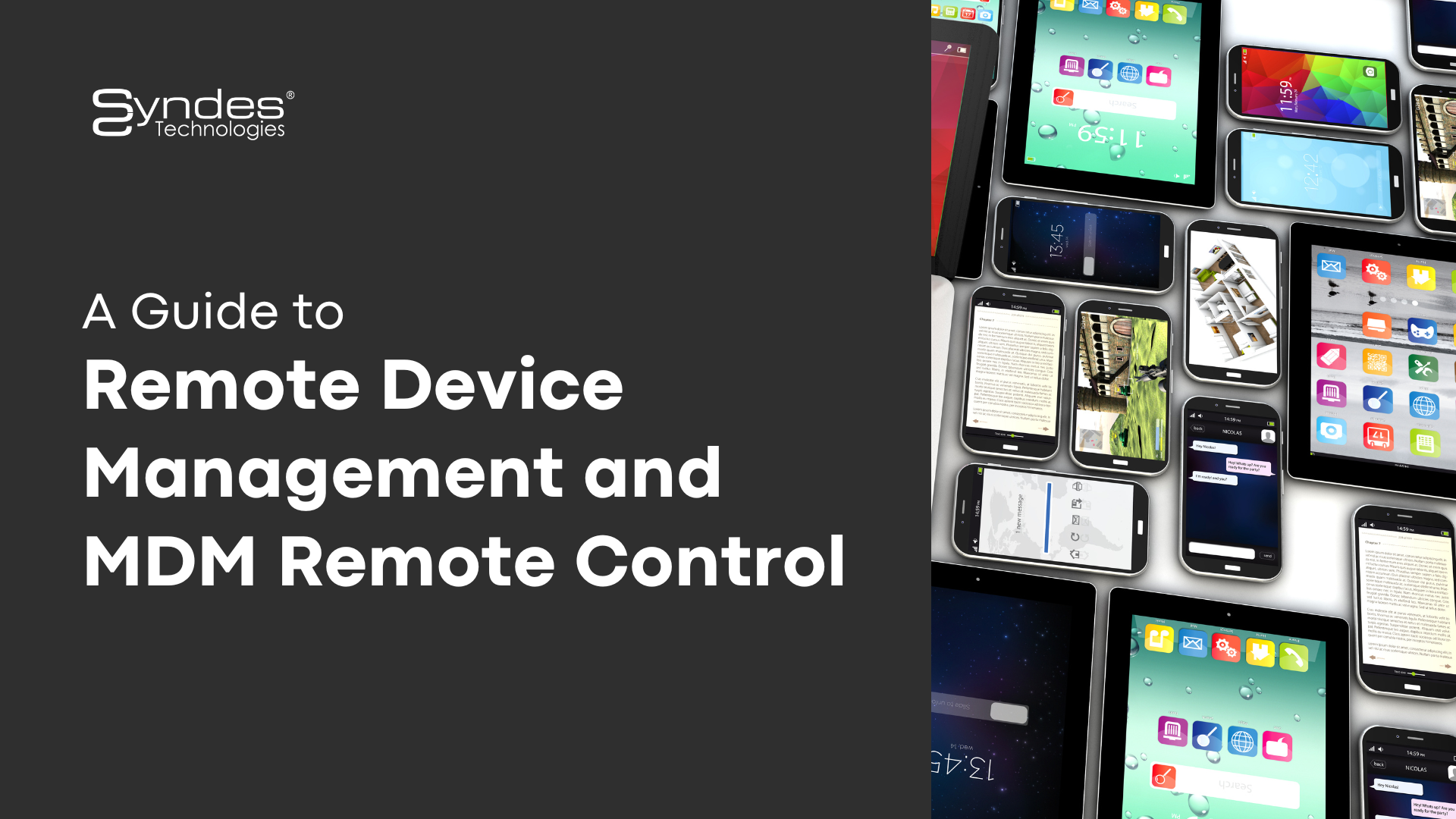What is Mobile Device Management and how are Enterprises adopting it?
Enterprises today are digitized- from knowledge workers to task workforce, everyone makes serious use of one or more mobile devices for work. Operationally, organizations are web-driven and mobile devices enhance the use of the applications for productivity, management as well as customer satisfaction.
For example, it is impossible to envision a delivery or logistics company to operate without digital devices loaded with business-specific apps. Irrespective of the industry, mobile devices have found their place in businesses and there’s no looking back.
But what’s more alarming is the vulnerability opened up by the usage of mobile devices at work. Organizations have to consider the following points:
- Is the organization IT equipped to troubleshoot issues on mobile devices?
- Is the organization’s policy for mobile usage comprehensive?
- Are the mobile devices used for work loaded with business resources?
- Is the IT paying enough attention to secure the mobile devices and the corporate data lying on it?
What is mobile device management?
To concise all the above-mentioned concerns that arise with mobility there’s a dependable solution- mobile device management. Essentially driving the mobility for your enterprise, mobile device management streamlines the entire mobility activity in your enterprise, securing endpoints while ensuring productivity and consistent user experience.
Mobile Device Management is implemented for, but not restricted to smartphones, tablets and laptops. It is also widely used to manage and secure rugged devices, special-purpose devices and mPOS (Mobile Point of Sale) systems.
What breathes life into mobile device management is an MDM software that enables the IT to:
- Secure business data on mobile devices used for work
- Enforce security settings and usage policies
- Enrich the devices with relevant apps & content
- Monitoring & tracking entire device inventory from a single console
- Upkeeping the device performance & carrying out periodic checks
An ideal mobile device management software should be able to perform the above-listed actions over the air, mitigating manual efforts of the IT. A comprehensive MDM solution should support a wide range of devices belonging to diverse operating systems such as iOS, Android, Windows and macOS. And as businesses evolve, the MDM software should scale, evolve and contribute to business growth by accommodating dynamic business needs and use-cases.
Is Mobile Device Management limited to company-owned devices?
In the past decade, there has been a considerable upsurge in the usage of mobile devices for personal work. People want to be connected, informed and accessible at all times, even at work. But as employees carry personal devices to their workplace or access work emails on personal devices, it becomes urgent for the enterprises to ensure the same security measures that are applied to company-owned devices to be applied on the employee-owned BYO devices. The major challenge here is not how to do it, but is how to do it without impacting the employee’s privacy and user-experience.
An ideal mobile device management software should intelligently separate business and personal content, applying policies extensively to the business apps and content without tracking the personal apps and data on the BYO devices.
What are the critical features of an MDM software?
- Over the air policy configuration:
IT teams should be able to configure security policies and business apps on devices in bulk, without having to physically handle them. This is especially critical for an enterprise having workforce located at several geographic locations
- Comprehensive policy & restriction configuration
The chosen MDM software should give total control of the device to the IT. The IT teams should be able to lock down devices like kiosks, digital signage by configuring minuscule features of the device- from branding to hardware. IT administrators should be able to configure settings such network, sharing and media on managed devices.
- Application Management
An MDM solution should explicitly help in-app management- IT should be able to publish or block apps, update apps remotely and also push enterprise apps privately on managed devices.
- Content Management
Controlling browsing, allowing or disallowing websites and publishing content and resources on managed devices is crucial for equipping the devices for work while maintaining data costs on devices. An MDM solution should be able to drive content management for the enterprise, irrespective of deployment type. When the devices are deployed like kiosks or digital signage, IT admins should be able to configure versatile content on the device, remotely.
- Security
Not enough can be stressed on how your MDM software should be robust enough to secure mobile devices from unauthorized access and misuse. An ideal MDM solution should allow crucial configurations like remote locking, remote wipe-off, selective remote wipe-off (in case of BYOD deployment), factory reset protection and jailbreak detection.
- Troubleshooting & Inventory Management
Mobility increases employee productivity, but it should not burden the company IT with added labour of monitoring and managing the mobile devices deployed for work. A strong mobile device management software should provision device issue detection and troubleshooting by providing a 360-degree overview of the entire device inventory. This will also help the IT to carry out data-driven compliance checks as well as automate regular tasks, reducing manual effort and increasing IT productivity.
Adopting mobility can create a positive impact on your business, but driving this mobility with an appropriate MDM solution can accentuate your business benefits more than you can envisage!
Sorry, the comment form is closed at this time.





